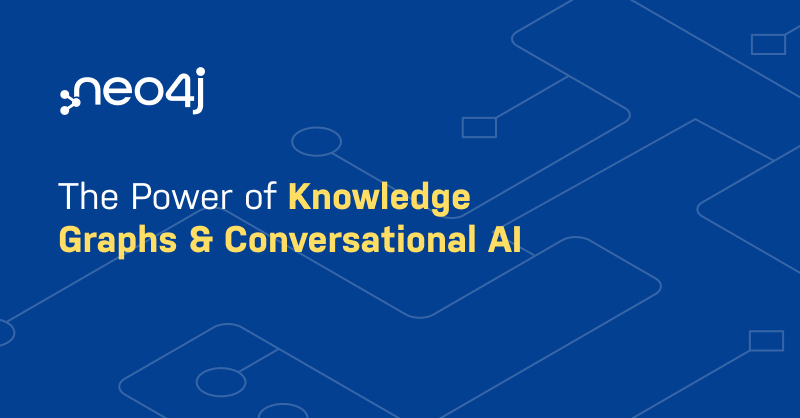The Power of Knowledge Graphs and Conversational AI

Senior Product Marketing Manager
2 min read


It’s no longer a question if Conversational AI will change the way we work, but rather how much. The explosive growth of OpenAI’s ChatGPT and now Microsoft’s AI-powered Bing and Google’s Bard show the appetite for conversational AI among consumers is insatiable. The total addressable market for Conversational AI is estimated to reach $46 billion by 2028 from approximately $10 billion in 2021.
The demand for conversational AI expands beyond the requirements of large scale language models. Many enterprises deal with information silos that make it difficult to find, surface, and share helpful information that can improve business outcomes. For years, knowledge graphs built using Neo4j have proven highly effective for building internal chatbots that can help surface information faster and accelerate projects and timelines.
There are four main ways knowledge graphs, like those used in Neo4j Graph Data Science, can help power conversational AI:
- Contextual awareness: Understand the context of a conversation by modeling the relationships between different entities that aren’t explicitly stated. By capturing the meaning and relationships between entities in a domain, chatbots can interpret the intent of a user’s message, ask for clarifications, and provide more personalized responses.
- Personalization: Build user profiles to help tailor conversations. By capturing a user’s interests, preferences, and past interactions, a chatbot can recommend products, services, or information relevant to the user’s context.
- Natural language Understanding: Understand the meaning behind user queries with a combination of Natural Language Processing (NLP) and knowledge graph. Knowledge graph inferencing and completion can leverage NLP, graph algorithms, and ML to help chatbots better understand the meaning behind user queries. This can help the chatbot provide more relevant and useful responses.
- Multimodal interactions: Represent different types of information, including text, images, video, and audio in a knowledge graph. This means that a chatbot could provide more sophisticated responses, for example, by including visual aids or providing additional details about a topic.
Did you know that you can use ChatGPT to help you write Cypher code and generate dummy data to test out new Graph Data Science techniques? Check out out Michael Hunger’s blog Exploring ChatGPT for Learning, Code, Data, NLP, & Fun to learn more.
Do you think Neo4j Graph Data Science may be able to help you with your own AI needs and interests? Contact a Graph Data Science Specialist today.








